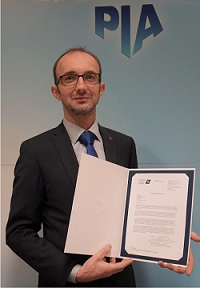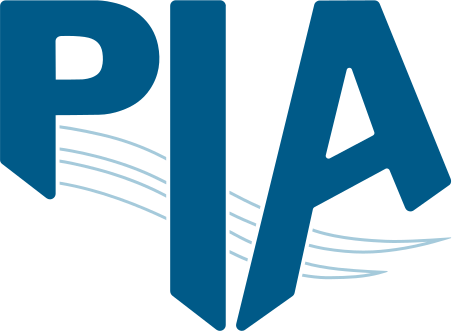PIA GmbH approved by U.S. Coast Guard as Independent Laboratory for testing of Ballast Water Management Systems
PIA GmbH expands maritime testing services as an Independent Laboratory (IL) and received a letter of acceptance by the United States Coast Guard Office for Operating and Environmental Standards for testing of Ballast Water Management Systems (BWMS) to meet the requirements in 46 CFR 162.060.

PIA provides this service in collaboration with its sub-laboratories:
- Ankron Water Services GmbH, Germany
- Bureau Veritas Marine & Offshore SAS, France
- Golden Bear Facility at California State University Maritime Academy, USA
- Phoenix Testlab GmbH, Germany
In addition, PIA is accepted by the U.S. Coast Guard for testing of marine sanitation devices and oily water separators:
- Recognized Facility for evaluating, inspecting and testing marine sanitation devices for compliance with the standards and regulations in 33 CFR Part 159 as promulgated under section 312 of the Clean Water Act (33 U.S.C. 1322).
- Qualified Facility for evaluating, inspecting and testing of sewage treatment plants for compliance with the standards and regulations in IMO Resolution MEPC.227(64) and in 33 CFR Part 159 as promulgated under section 312 of the Clean Water Act (33 U.S.C. 1322).
- Recognized Facility for collecting and testing effluent in certain Alaskan waters from cruise vessel operations for compliance with the standards and regulations in Subpart E to 33 CFR Part 159 as promulgated under section 1(a)(4) in Pub. L. 106-554.
- Designated Facility for performing approval testing on pollution prevention equipment (PPE) for compliance with the standards and regulations contained in IMO Resolutions MEPC.107(49), MEPC.108(49) & MEPC.240(65) and 46 CFR 162.050, as promulgated under the Act to Prevent Pollution from Ships (33 U.S.C. 1901 et seq.). PPE includes 15 ppm bilge separators and 15 ppm bilge alarms.
Joint paper on non-conformities with marine sewage regulations for greywater
The paper explores non-conformities with marine sewage rules. It follows previous joint-papers on chlorination disinfection without de-chlorination, no-sludge and recirculation-via-influent. These non-conformities are widening the gap between rules and realities.
The article Opinion: Grey Water Related Non-Conformities Need to be Addressed can be accessed via the following link:
https://maritime-executive.com/editorials/opinion-grey-water-non-conformities-need-to-be-addressed
For further information, please refer to the following related publications:
Seventh HELCOM Cooperation Platform on PRF in the Baltic Sea
Seventh HELCOM Cooperation Platform on Port Reception Facilities (PRF) in the Baltic Sea meeting will be held at the premises of the Federal Maritime and Hydrographic Agency (BSH) on Wednesday, 13 September 2017. Contracting Parties to the Helsinki Convention, Observer Organizations as well as other public sector institutions and relevant stakeholders are invited to the meeting of HELCOM Cooperation Platform.
The meeting will particularly focus on the ongoing project of the developement of a “Best Practice Guidance for the handling of wastewater in Ports" for the Special Area Baltic Sea, as well as the results of the CLIA simulation exercise on MARPOL Annex IV Special Area and practical case studies of specific ports, including proposals for next steps for consideration by HELCOM MARITIME 17-2017.
Practical information for participants and the provisional programme are available on the CP PRF 7-2017 Meeting Site in HELCOM Meeting Portal.
Amendments to resolution MEPC.227(64) adopted
On its seventieth session the Marine Environmental Protection Committee (MEPC) adopted resolution MEPC.284(70) on Amendments to the 2012 Guidelines on implementation of effluent standards and performance tests for sewage treatment plants. The resolution includes new forms of certificates of the type approval for sewage treatment plants. Compliance with the special area requirements in regulation 9.2.1 of MARPOL Annex IV is now certified on a separate certificate of type approval.
The Baltic Sea Special Area will take effect on:
- 1 June 2019 for new passenger ships;
- 1 June 2021 for existing passenger ships other than those specified below; and
- 1 June 2023 for existing passenger ships en route directly to or from a port located outside the special area and to or from a port located east of longitude 28˚10' E within the special area that do not make any other port calls within the special area.


